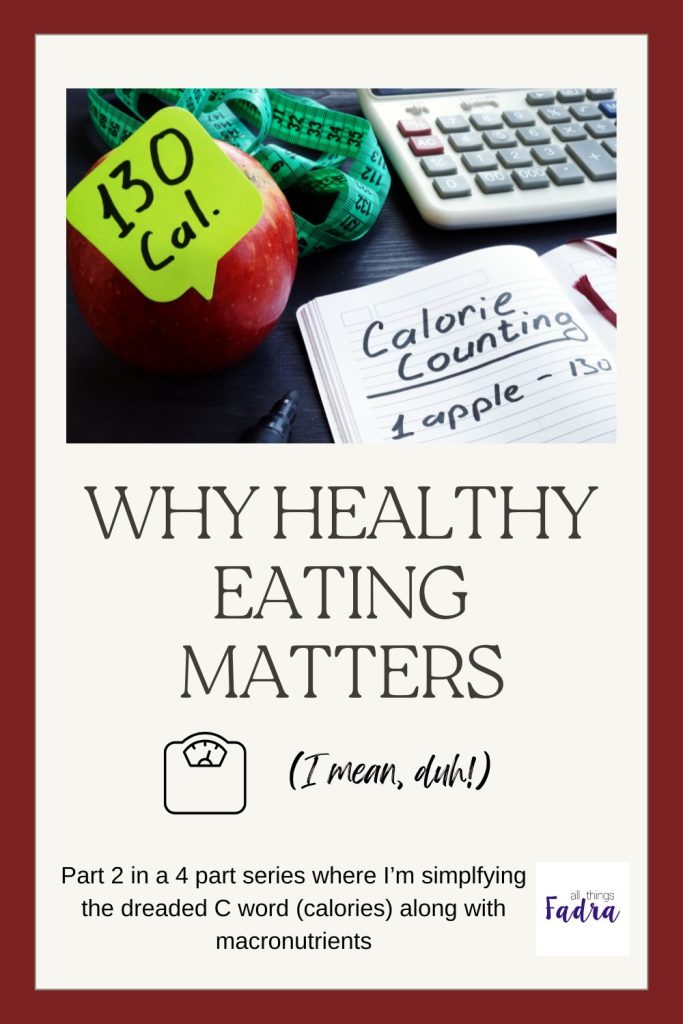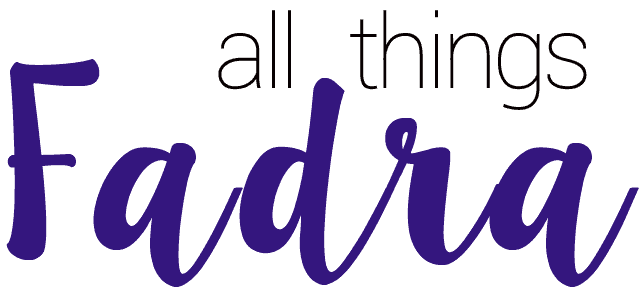Healthy eating is the secret that people don’t emphasize enough. And it starts at home. That doesn’t mean you can never eat out again and it doesn’t mean you’re doomed to chicken and vegetables forever.
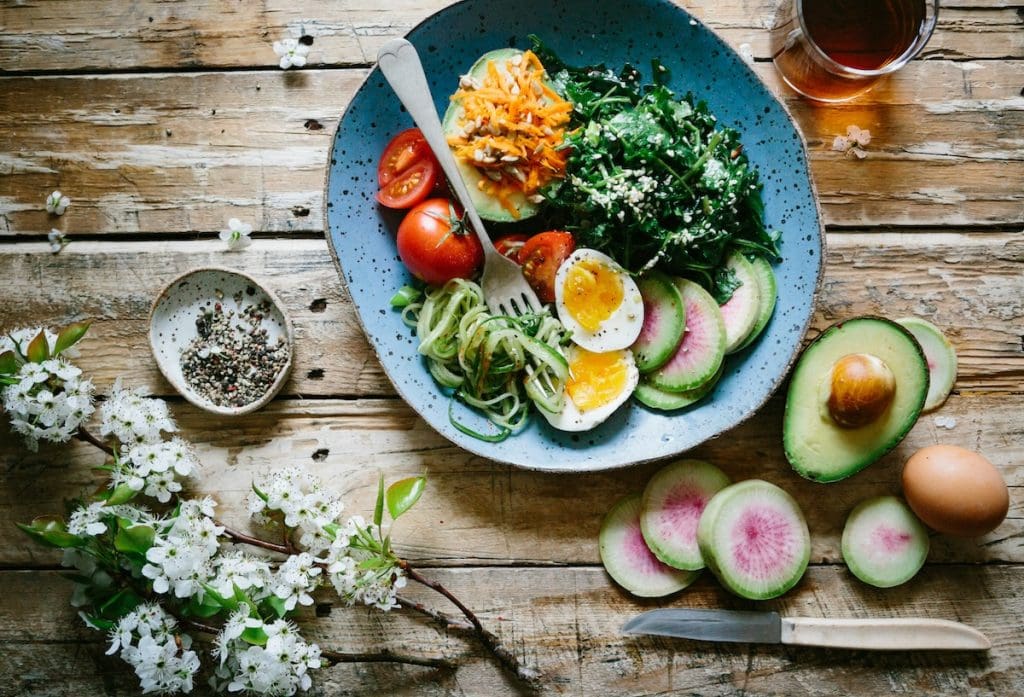
If you missed my last post on the basics of how to lose weight, let me give you a quick overview. It’s mostly about the food you’re eating. And nobody likes to hear that because food gives you pleasure.
I’m not here to take away your pleasure. If you want a piece of the birthday cake, I’m the first to say, “you only live once!” You just have to make sure you’re not celebrating somebody’s birthday every day. And you’re not taking a piece that’s the size of your head.
If you feel tempted in that way, you are not alone and it’s not your fault! But before we start justifying extra pieces of cake in our day, let’s talk a little more about CALORIES.
Don’t roll your eyes. Stay with me!
Why Calories Matter Even When We Don’t Care About Them
I know you hate to think about calories. I hate to think about calories. But if you want to get healthier, leaner, or, like me, less FATTER, you need to know why calories matter.
IT TAKES 3500 CALORIES TO BURN A POUND OF FAT.
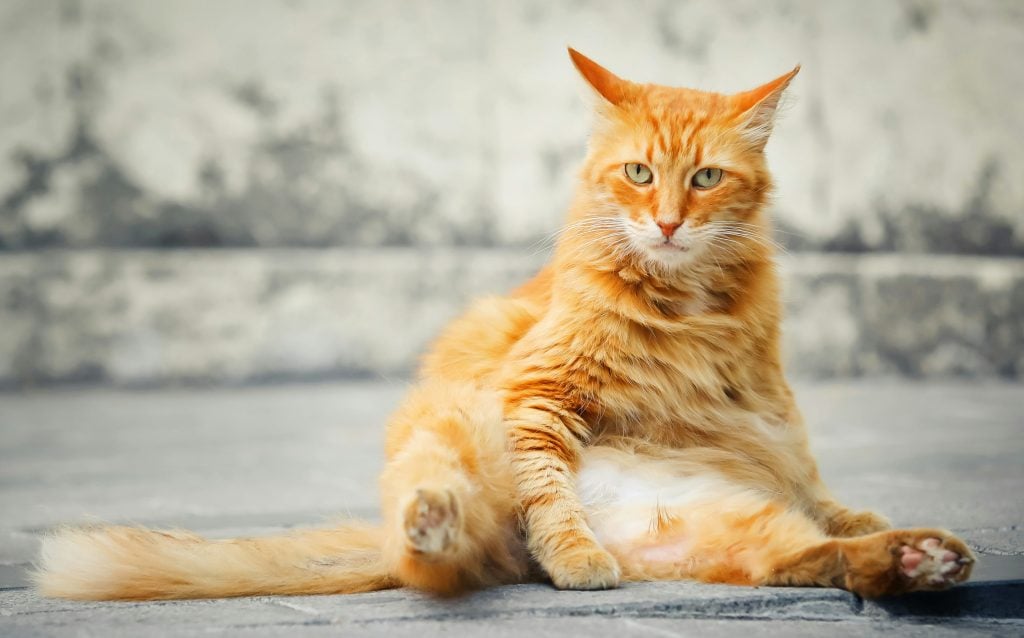
Remember when the pandemic hit and suddenly people who really knew nothing about science put signs on their lawn and wore t-shirts that said, “I Love Science” or “I’m Thankful for Science” or “Trust the Science.” But when it comes to the science of weight loss, nobody really wants to hear it or believe it.
The science is pretty simple. Your body needs a certain amount of energy every day to function (remember the BMR I talked about here?). That energy is quantified as calories. It’s a measurement just like pounds and inches. Once you add in the things you do an a daily basis, that number becomes your “maintenance calories” or the amount of food intake that works for you to neither gain nor lose weight.
So if you want to lose weight, deep breath, you’ve got to tip the equation by taking in less calories than you need. That way, when your body runs out of calories derived from food, it’s going to go to your reserve energy – stored in your fat cells.
Your body needs a deficit of 3500 calories to burn through a pound of fat. Want to lose a pound of fat in a week? You need a deficit of 500 calories per day. That’s gonna make ya girl HUNGRY so I prefer a slower level of fat loss. But looking at your existing calories is a great place to start.
The Hidden Calories in Everyday Foods

As a quick reminder, my recommended daily calorie intake is 1618, give or take. That includes my basal metabolic rate (the amount of calories my body uses just to exist) along with my average activity level, adjusted for my age, height, and weight.
Now, let’s take an average day for someone (let’s call them ME) who might eat out and who is trying to make “healthy” choices. I’m also going to include the macronutrients for each item (protein, carbs, fat) for later discussion.
Breakfast
Egg McMuffin (one of the healthier choices on the McDonald’s menu)
- Calories: 310
- Protein: 17g
- Carbs: 30g
- Fat: 13g
Lunch
Toasted Garden Caprese Sandwich (vegetarian sandwich from Panera)
- Calories: 890
- Protein: 32g
- Carbs: 85g
- Fat: 47g
Dinner
Cobb Salad (Chick-Fil-A)
- Calories: 830
- Protein: 42g
- Carbs: 31g
- Fat: 60g
Total Meals
Wow, that seemed like a pretty good day. A light breakfast, a vegetarian sandwich (and I said no to the chips!), and a salad for dinner. I didn’t include any drinks here but imagine adding in a Frappuccino from Starbucks or even cream in your coffee (or God forbid, a soda!).
For this seemingly relatively healthy day, I would have had 2030 calories – well over what my body normally needs. And let me tell you, I don’t usually say no to the chips. I also had 91g of protein (that’s great!), 146g of carbs (not bad), and 120g of fat (yeah, no). It might surprise you to see that the salad had the most fat. In fact, the Cobb Salad has some of the highest fat numbers on the entire Chick-Fil-A menu! If you remove the salad dressing, you save 310 calories and 32g of fat.
Why Home-Cooked Meals Lead to Healthier Choices
But okay. You probably don’t eat out three meals a day. I wanted to show you this example because I have found that the number one way I exceed calories in a day is EATING OUT. Restaurants want to make you fat and happy and so they add the things that make the food super tasty – namely, fat, salt, sugar, and highly processed carbs.
This idea of “hyperpalatability” is that our body will crave things that are super tasty. And why are they super tasty? It’s not just your tastebuds. It goes back to science. If you think back to early human days, we needed to be able to quickly escape danger around every corner. And for that, we needed quick energy sources. We’re wired to crave these things that were historically rare in nature.
So, it’s not your fault that you’re a sugar addict or that you can plow through a bag of anything salty. Or that you can eat an entire Bloomin’ Onion. These things are tasty and our bodies are wired to take advantage of these tasty things. And restaurants know it. Unfortunately, it is your job to do something about it.
The first tip for losing weight is to reduce the number of times you eat out. Notice I didn’t say STOP going out to eat (although your bank balance will thank you). I just said to be more mindful of the “grab a quick bite here” or “just one Starbucks drink there.”
A Quick Guide to Macronutrients: Protein, Carbs, and Fats
So I had an extra 400 calories one day. Is that the end of the world? Nope, not at all. But if I do that every day, it’s going to lead to a slow and steady weight gain. And if you’re not making healthy choices when you’re eating out, you can definitely be eating a much larger excess of calories. Many American restaurants now put calories on the menu and it has taken a lot of the fun out of eating out. I enjoyed it more when I was in the dark (but my waistline didn’t!).
The bigger problem is that most of these calories come from FAT. Don’t fall into the trap of thinking FAT makes you FAT. Your body actually needs fat! It’s that fat is very calorically dense. This is why it’s important to have a clear picture of the macronutrients in food – what they are and how much you need. And it makes calorie counting so much easier. I’ll explain what I mean in a sec.
Macronutrients, simply put, are essential nutrients that the body needs in large quantities to provide energy and maintain structure and function, Namely, PROTEIN, CARBOHYDRATES, and FATS.
Trust me when I tell you that all three are important for a healthy body.
Protein is important for building and repairing muscle (explaining why bodybuilders focus on protein bars and protein powders to meet their high targets) and for supporting the immune system. And it’s pretty hard to have too much of it in your diet.
Carbohydrates, which include sugars and fiber, are important for instant or sustained energy. But unless you’re running a marathon, you’re probably overdoing it with carbs. If you don’t need all of the immediate energy you’re consuming, your body saves it for later. What a great evolutionary idea! But if later means sitting on the couch, your body is going to store that energy for some other time, and likely right around your waistline.
Fats are important for storing energy (thanks to excess carbohydrates) but also for cell membranes, nutrient transportation, and insulation. And this is one place where we can definitively say there are good fats and bad fats. Basically stay away from trans fats (the absolute worst) and saturated fats as much as possible.
To summarize:
- Protein: Essential for muscle health, immunity, and satiety.
- Carbs: Provide energy; choose whole grains and vegetables for sustained release.
- Fats: Necessary for nutrients and health, but calorie-dense. Focus on healthy sources like nuts, seeds, and olive oil.
Quick Tip: Aim for about 30% protein, 40-50% carbs (preferably complex), and 20-30% healthy fats.
How to Balance Your Macros for Healthy Weight Loss
Let’s quickly talk about calorie differences between protein, carbs, and fats.
- Carbohydrates: 4 calories per gram
- Protein: 4 calories per gram
- Fat: 9 calories per gram
That might sound science-y, especially if “grams” is something you covered in 3rd grade when they made you learn the metric system. But it’s a really good way to consistently know how much you’re eating (yes, I use a scale but I’ll talk about that later).
Also, YIKES! Fat has twice the calories that carbs and protein does. That’s why you only put a little butter on your potato. Or why it might be better to choose a lower fat sour cream for your taco. Fats, as we saw from the Chick-Fil-A salad dressing, is an easy (and delicious) way to run up your calories.
You might be happy to know that protein and carbs are the same on the calorie scale. So can I just eat pasta instead of boiled chicken? Well, maybe.
Figuring Out Your Macronutrients
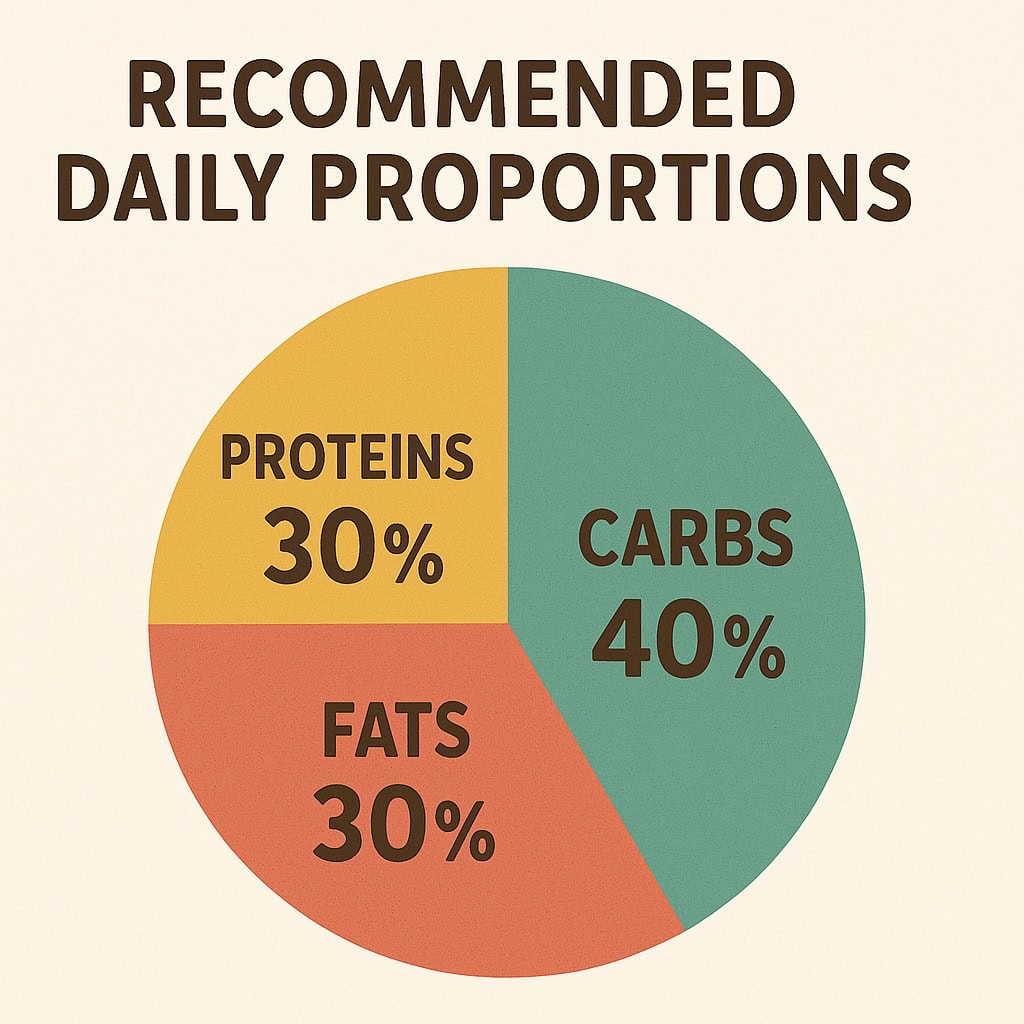
Everyone has a different need for macronutrients. As you get older, more and more health care providers are recommending higher protein levels (about 1 gram for every pound of ideal body weight) to build and maintain healthy muscle mass. Especially important for middle aged and older people.
What you eat is important for your body’s health. You need carbs, fats, and protein. Remember the 80s and 90s when everything was low fat? That messed us up because they filled all of those delicious Snackwells with extra sugar (carbs). Balance is important.
General recommendations on calories by macronutrients says that you should be getting 20%-30% of your calories from fat, 30% from protein and 40%-50% from carbohydrates.
For my 1618 calories, my day might look like this:
- 324 calories from fat
- 485 calories from protein
- 809 calories from carbohydrates
It’s one thing to track calories and it’s a great start. But if you’re specifically looking to lose weight or even just recomposition your body (more muscle, less fat), you’ll want to keep your calories down while keeping your macros in the right proportion. And eating the right macros will help you avoid hunger.
Understanding Cravings and Healthy Alternatives
The biggest challenge with changing your diet is that you want things that taste good. It might not surprise you to find that three cups of raw broccoli has about the same number of calories as two donut holes (about 100). (Healthline). But as you might have guessed, shoving 3 cups of broccoli down your throat might fill your stomach but it just won’t taste as good. And it would probably give you a ton of gas.
Find a happy medium. Maybe eat 1 ½ cups of broccoli and one donut hole. Or air fry your broccoli with olive oil (crispy broccoli is the bomb). Or drink a Fairlife Chocolate Protein Shake (I swear this brand tastes exactly like chocolate milk) and you’ll be consuming 180 calories but also 30 grams of protein.
Protein gives you the highest level of satiety and fiber helps keep you full. So yes, you should eat your meat and veggies but if you’re counting your calories and your macros, you can leave plenty of room for some treats.
Next up: I’m giving you some suggested tools of the trade that will help you figure out exactly how you can do that.
This is Part 2 of a four part series on losing weight and healthier living. I’m just like you – trying to take it all in and figure out what works. Join me for the rest of the series!
Part 1: How to Actually Lose Weight: A Realistic Approach (No Gimmicks!).
Part 3: How to Stay Motivated and Lose Weight: Tools That Really Help
Part 4: When Dieting Isn’t Enough: Tackling Hidden Barriers to Weight Loss
